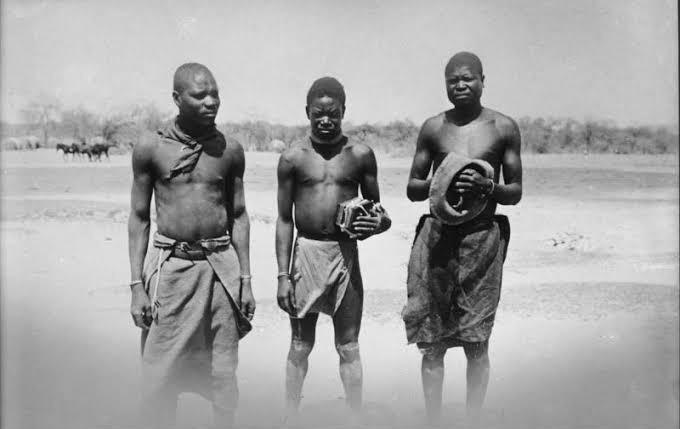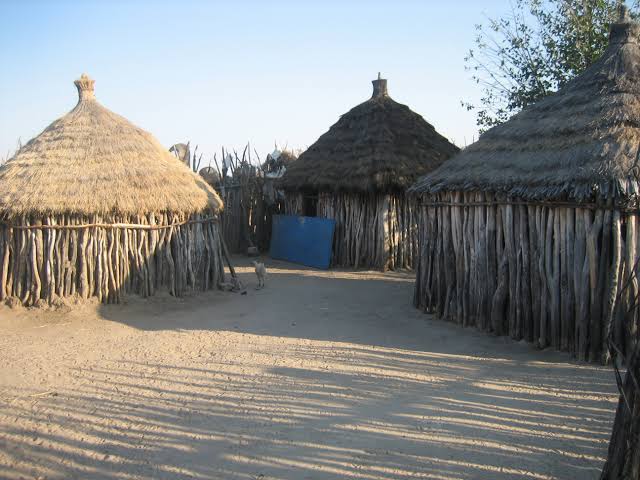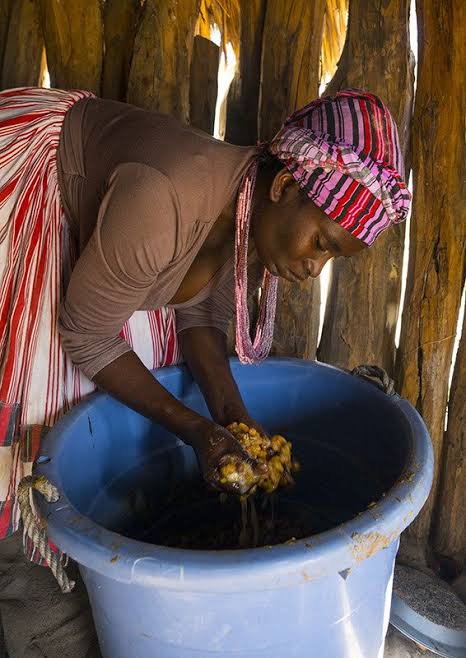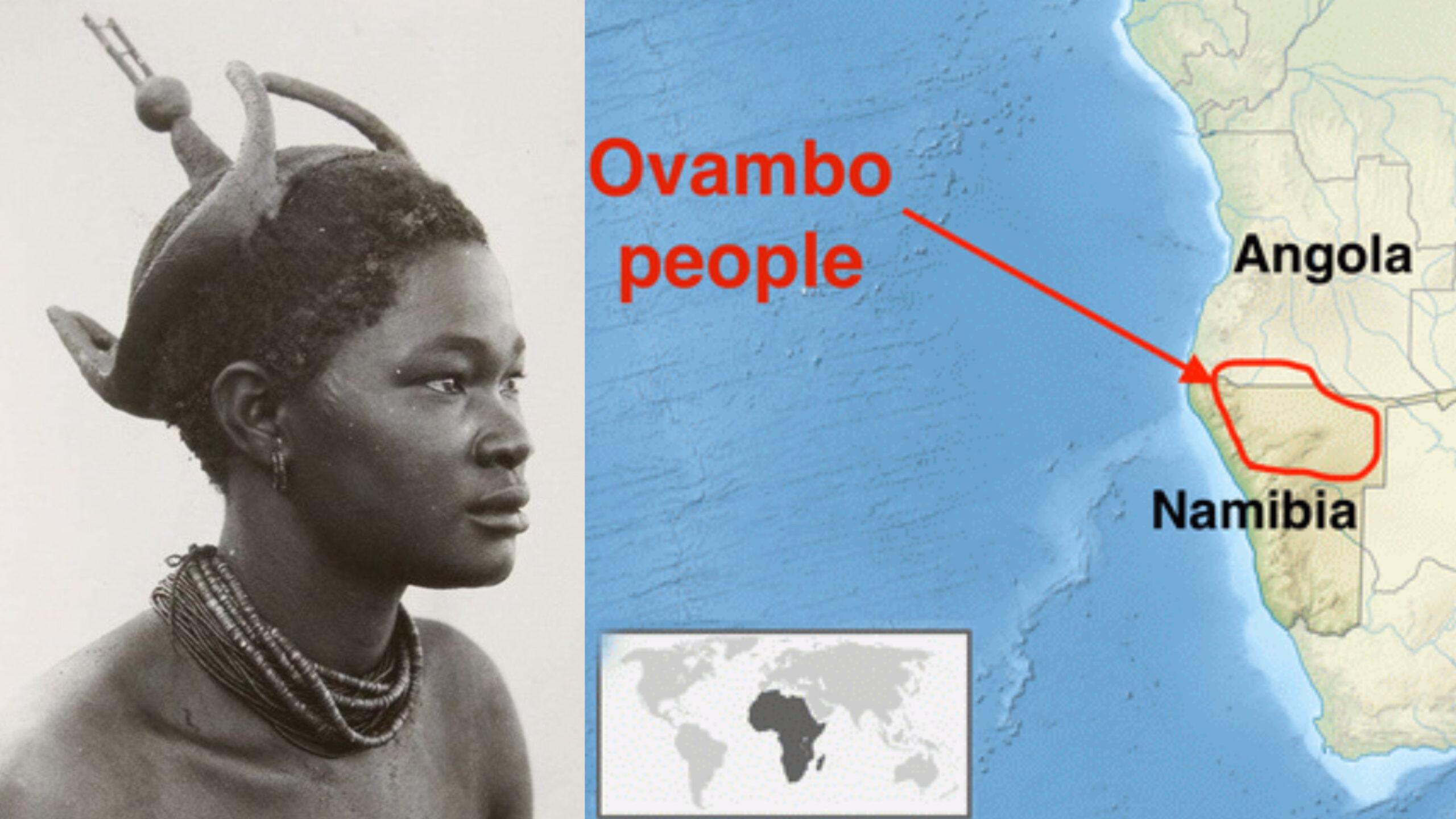The Ovambo people are a Bantu ethnic group native to Southern Africa, mainly present Namibia. They are the largest known ethnic group in Namibia, accounting to about half of the population.
They are also found in the province of Cunene in southern Angola, where they are more commonly known to as ‘Ambo.’ The Ovambo are made up of a number of ethnic Bantu kindred tribes that occupy what was formerly called Ovamboland. They are a minority in Angola, accounting for about two percent of the Angolan population as a whole.
There are an estimated 1.6 million ethnic Ovambo people, and they are mostly Christian Lutherans (97 percent ).
Their language, the Ovambo language, belongs to the Niger-Congo family of languages of the southern branch.
The Ovambo began migrating from the Zambia region to their present location from the northeast around the 14th century. In the 17th century, they settled along the Angola-Namibia border, then spread further south into Namibia. They have a close cultural, linguistic and historical connection with the Herero people found in Southern regions of Namibia, and the Kavango people settled around the Okavango River to their east.

Before the 19th century, the isolated, low-density pastoral nomadic lifestyle left the Ovambo people largely untouched by the Swahili-Arab and European traders, unlike most ethnic groups in Africa. Germany left the Ovambo people undisturbed when they established a colony in Namibia in 1884.
The southern and coastal regions were the target of the Germans. Namibia was annexed by the British as the South West Africa province to the South African administration after World War I. This brought drastic changes with the entry of plantations, cattle breeding and mining operations into the Ovamboland of South African.
In Angola, the colonial Portuguese administration, which had previously concentrated on its maritime, northern and eastern activities, invaded southern Angola to form a frontier with the increasing interests of South Africa and the British imperial. In the 1920s and 1930s, the Ovambo people mounted some armed resistance against the British and Portuguese forces.

is a hut complex enclosed by a fence of large vertical poles connected to each side by two horizontal poles. The complex is a maze with two gates, but inside the homestead, it’s easy to get lost. Generally, each hut has a different function, such as Ondjugo (the woman of the hut of the homestead) or Epata (kitchen area).
The people of Ovambo lead a settled life, relying mainly on a mixture of farming and animal husbandry. The staple crops were millet and sorghum (iilyavala), and another common crop was beans (omakunde). Pastoral operation with herds of cattle (eengobe/eenghwandabi), goats (iikombo/onakamela) and sheep (eedi) is more important in drier regions or seasons. The husbandry of animals is not for meat (ombelela), but mainly as a source of milk (omashini). Hunting, fishing, and gathering are supplemented by their food.
The Ovambo were engaged in elephant (eenjaba) hunting for their tusks during the colonial era to satisfy the demand for ivory, and they nearly hunted the elephants to extinction in their area.
Each tribe of Ovambo had a hereditary chief who was in charge of the tribe. By having a council of headmen who run tribal affairs, several tribes changed representation. Members of the Owamboland royal family are known as aakwanekamba, ovakwaluvala, ovakwamalanga, ovakwaanime, aakwanyoka, and many more; only those who by birth belong to this family have a right to chieftaincy through the maternal line. The tribes reflect their descent by a system of matrilineal kinship, with hereditary chiefs emerging from the children of the parent, not from the son. Polygyny, with the first wife known as the senior, is embraced.

A traditional liquor called ombike is brewed by Ovambo. It is distilled from fermented fruit mash, and is common in rural areas in particular. The fruit to grow ombike are collected from makalani palms (Hyphaene petersiana), jackal berries (Diospyros mespiliformis), buffalo thorns (Ziziphus mucronata), bird plumes and cluster figs (Ficus racemosa) (Ficus racemosa). Ombike is also brewed and consumed in urban areas, with additives like sugar. This liquor is then referred to as omangelengele; it is more potent and even toxic at times.
 The African History Truly African
The African History Truly African

